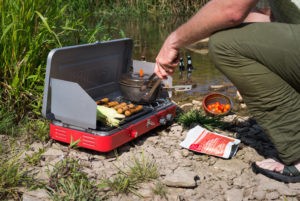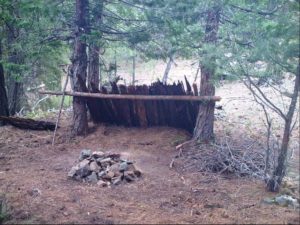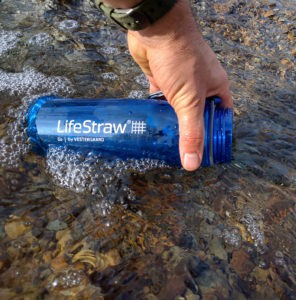At Mainstream Adventures, we celebrate a life spent in the outdoors, and with the sense of adventure must come a heavy dose of precaution. The wilderness can be a dangerous place, after all, and while much of it has been tamed from the ever expanding industrial movement, certain skills are necessary in order to keep you safe and happy while you venture into the great unknown. Undoubtedly, we have all heard stories of those who wander into the woods without a sense of their own abilities, lacking preparation and a healthy fear of what can happen miles away from civilization. The consequences can be catastrophic, but generally speaking the wilderness is a great place for those who have the skills to explore it the right way.
First and foremost, be humble.

A sense of humility will keep you from being reckless. No your limits. Spending time in nature can be one of life’s most rewarding endeavors, however it can also be a dangerous one. Hiking in the forest gives the adventurer the right to roam, an opportunity to explore, a vast open landscape with few rules for travel. An environment like this will encourage you to follow impulse, to act on will alone. But an adventurer cannot exist in the outdoors without first observing the limitations of his/ her, or their own responsibility. This is built through experience. I can’t stress this enough, know your limits and error on the side of caution.
Learn how to use a map or compass.

Proper orientation and navigation is first on the list of essential skills. Adventuring into the outdoors, especially where off-trail excursions are concerned, requires the ability to read a map, orient it to the landscape, and use a compass to direct navigation. Triangulation is the simplest technique of orientation. The technique is simple, generally speaking: orient your map to magnetic north and compensate for declination, choose two visible landmarks and measure their degree deviation from north, then converge those lines at a central point, which will give you a rough approximation of where you are.
Know how much, and what types of food to bring.

Adventurers into the wilderness carry everything they eat on their backs until they eat it, and this is not just a concern because of weight, but because of nutrient density and cooking requirements, too. High-calorie foods are a prerequisite, especially for thru-hikers, who burn many more thousands of calories per day than usual. Even day hikers should pay close attention to what they bring with them to eat, and it is a good idea to prepare for scenarios in which they find themselves stranded for a night in the wilderness.
Animal Safety

When it comes to food, storage is especially important when venturing into bear country. Proper steps need to be taken in order to ensure your safety from bear attack—which are unusual, but not impossible—and more typically the safety of the bears. When habituated to human food, bears become dependent and must be euthanized. For that reason, proper safety and food storage is important
Know how to build a fire

In the back-country, it is important to first and foremost check the fire safety levels and prepare accordingly. If it is safe to build a back-country fire, one of the best methods is the tee-pee method, like building a pyramid of silverware. The idea is to build slowly; especially in damp conditions, it is easy to smother a fire before it has a chance to grow.
Drive a forked stick into the ground so that it leans against a supporting stick. Build around it with more tinder, leaving enough room to light the fire with fire-starting materials, placed inside the tee-pee dry grass and moss are especially useful. Once you have sparked these fire-starting materials, build the fire slowly by adding more sticks, and when the coals have grown, logs.
In the back-country, the more efficient you can be with fuel, the better. Search for fallen debris, never living material. A fire does more than warm you; it is a morale booster, a task to focus on, and a great way to add to the experience of being in the outdoors.
Building a Shelter

For the purpose of survival, there are two types of shelters you need to know: the kind that keep you dry and the kind that keep you warm.
In wet conditions, a simple lean-to is easy to build and protects you from the rain. Prop a 8- to 10-foot beam between two forked supports, creating a triangular opening. Leaning sticks against the support beam, create an enclosure. Complete the shelter by layering branches or leaves on top of the shelter to shield the rain. This shelter, though simple, will keep you dry, but its simplicity makes it vulnerable to collapse, so it is important to build it near windbreaks or low the the ground.
In snowy conditions, a snow cave will keep you dry and warm—remarkably so. However, its design carries an inherent danger of asphyxiation if not properly ventilated. In deep snows, burrow 8 feet horizontally into the snow and begin to excavate out, building a sleeping platform raised above the floor. Add a thin trench below your sleeping platform that leads to the exit. These will ensure that your exhaled carbon dioxide does not “pool,” which carries with it the danger of asphyxiation. Curve the walls and ceiling to a point rather than square walls to direct meltwater to the floor without dripping.
How to find clean water.

Access to water is of utmost importance for survival in the outdoors. As such, there are several tools at your disposal to keep yourself hydrated and safe. Experts argue that you should drink half of your body weight in ounces every day to ensure that you are properly hydrated, and it is a burden to carry this amount of water with you—especially when planning for longer journeys.
A wide array of alternatives is at your disposal for the treatment of water. I prefer to carry a life straw with me on long trips into the woods. However there are several other brands available as well. Bringing water to boiling point kills off deleterious bacteria, but you want to conserve your fuel, so this is an option used only when necessary. (Sometimes a bandanna or clean t shirt is all you need.)
Learn the signs and symptoms.

For adventurers who spend enough time in the wilderness, a Wilderness First Res-ponder certification is a good idea, but some basic first aid skills are a must while in the open country. Chief among these, other than avoiding danger, is the ability to prevent worsening conditions before they become dangerous. Drink enough water, and pack adequate filtration devices to keep yourself hydrated. Learn how your body reacts to heat and cold, and learn how to layer your clothing so that you can quickly react to changing conditions.
Should dangerous situations arise, learn how to quickly assess and act in potentially life-threatening situations. Hypothermia and dehydration are a nuisance in urban settings, but they can kill you fast on the trail. Assessing an injured and unconscious hiker can make the difference between life and death. It is absolutely critical to know the signs and symptoms.
Though by no means comprehensive, these skills will help to keep you safe and happy in the outdoors. Proper research is so important when traveling into new area’s. Know your exits, learn the trails, study maps, find the park ranger stations, carry walkie talkies. All of these things will help to keep you safe in the forest.